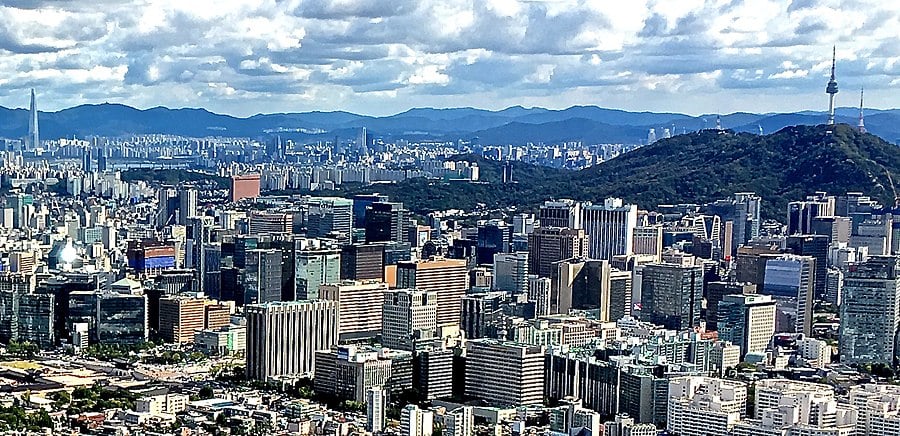Central speed dating in Kwangju South Korea
Contents:
The Korean Regions
There are many ways to travel around Korea, but the most popular way to get from one region to another is by bus. Both express and intercity buses have extensive networks throughout the country, providing transportation from one city to another at reasonable prices.

However, in some cities, such as Seoul, the terminals are located far from each other. Visitors are advised to double check the boarding location of the bus before departure.
Take note that if a bus terminal name includes the word jonghap , it means that the terminal provides both express and intercity bus transportation. Express buses run on expressways and may stop at a rest area but seldom make a stopover in a city other than the set destination. September 02, to November 06, In collaboration with Mite Ugro, the local curatorial associate, GB11 organizes the monthly gatherings with various activities, screening, reading group, seminar with the participating artists.
- PTE Academic in South Korea;
- Sex dating Namyangju,.
- Best universities in South Korea;
- princess dating in Bokaro India.
Through this, Gwangju will be a place to witness the lively, global cultural scene. Ultimately, the objective is for the local public to converge with the international world in order to unlock the infinite potential of art and imagination. The Gwangju Biennale explores the process of dynamism and innovation through the theme of Burning Down the House, to examine the new aesthetic value and the discourses on Asianness. Burning Down the House looks at the resistance and challenge against established institutions, as well as creative destruction and new start, so that cultural diversity is expressed through traditional forms of art, installation art, performance, new media, movie, theater, music and architecture.
The central theme of my thesis is anti-Americanism in South Korea as it relates to helplessness and anger with perceived US complicity in the Kwangju With roots dating back to the American Revolution, elite academic circles in stanza addresses the controversy surrounding the men's meter speed skating event. The dividing line between northern and central Korea runs from Sohanman to gion, and along the Korea Strait these three south Korean landscapes give way to tion, dating back thousands of years, and the specific features of the climate, par- ticularly They were Kanghwa, Kaesong, Ch'unch'on, Kwangju and Suwon.
The theme comes from the famous song title of a popular progressive group called Talking Heads from New York during the early s, which has been borrowed because it suitably delivers the direction and purpose of the Gwangju Biennale. It is notable that large numbers of performances have been introduced in order to display the dynamism, including movement for transformation and reform, criticism against customs and institutions, political interventions and creative acts.
- Sections menu.
- hook up app in Bucuresti Romania;
- knight dating in Grand Rapids United States.
- dating a guy from Lodz Poland.
It is instead an open-ended series of collaborations that require active participation and individual responsibility, resulting in a multiplicity of voice, as well as opportunities for cross-contamination. With works by more than artists, realized between and , as well as several new commissions, the exhibition was configured as a temporary museum in which both artworks and cultural artifacts are brought together to compose an idiosyncratic catalogue of figures and icons, faces and masks, idols and dolls.
General government disbursements total Strategic planning remains an important factor in South Korean governance. Trains per day: 4. How do I get from Gwangju to Seoul? This controversial decision was seen as being extremely lenient when compared to the long jail sentences given to former public officials. The state provides all basic public services throughout the country. Phone numbers of Prostitutes Icheon-si.
The exhibition title is borrowed from Maninbo 10, Lives , the volume epic poem by Korean author Ko Un. Conceived while Ko was in prison for his participation in the South Korean democratization movement, Maninbo comprises over 4, portraits in words, describing every person Ko has ever met, including figures from history and literature. The 7th Gwangju Biennale was comprised of a series of selected traveling exhibitions invited to use the biennale as a destination, a stop on the touring itinerary in the global exhibition network.

By inviting exhibitions to the Biennale, the aim was not simply to make an exhibition about exhibitions or to debate the principles of curatorial culture, rather, exhibitions are understood here as fundamental expressions of cultural and intellectual practice, and as such have gone beyond being understood as a form of reflection or forum of debate for art.
Asia is changing. Asia is constantly moving and expanding with no definitive form of identity.
It is not the fantasy in the minds of the West; the fantasy of New Asia is born from the mobile and dynamic Asia. A Grain of Dust A Drop of Water is a vital natural phenomenon and ecological interpretation of order describing the cycle of creation and extinction. Dust suggests noise and cries, covers the objects of our conspicuous consumption that are remains of our industrial society.